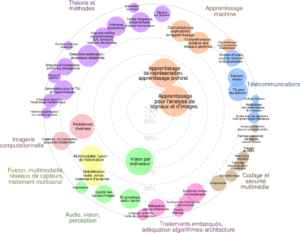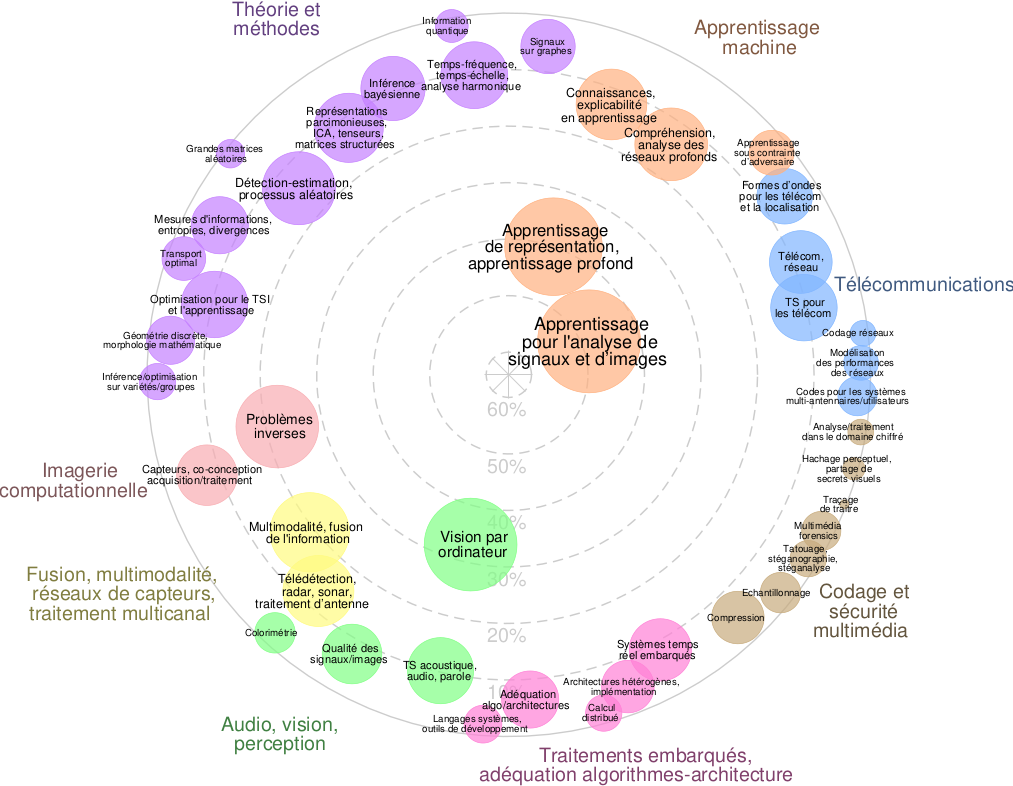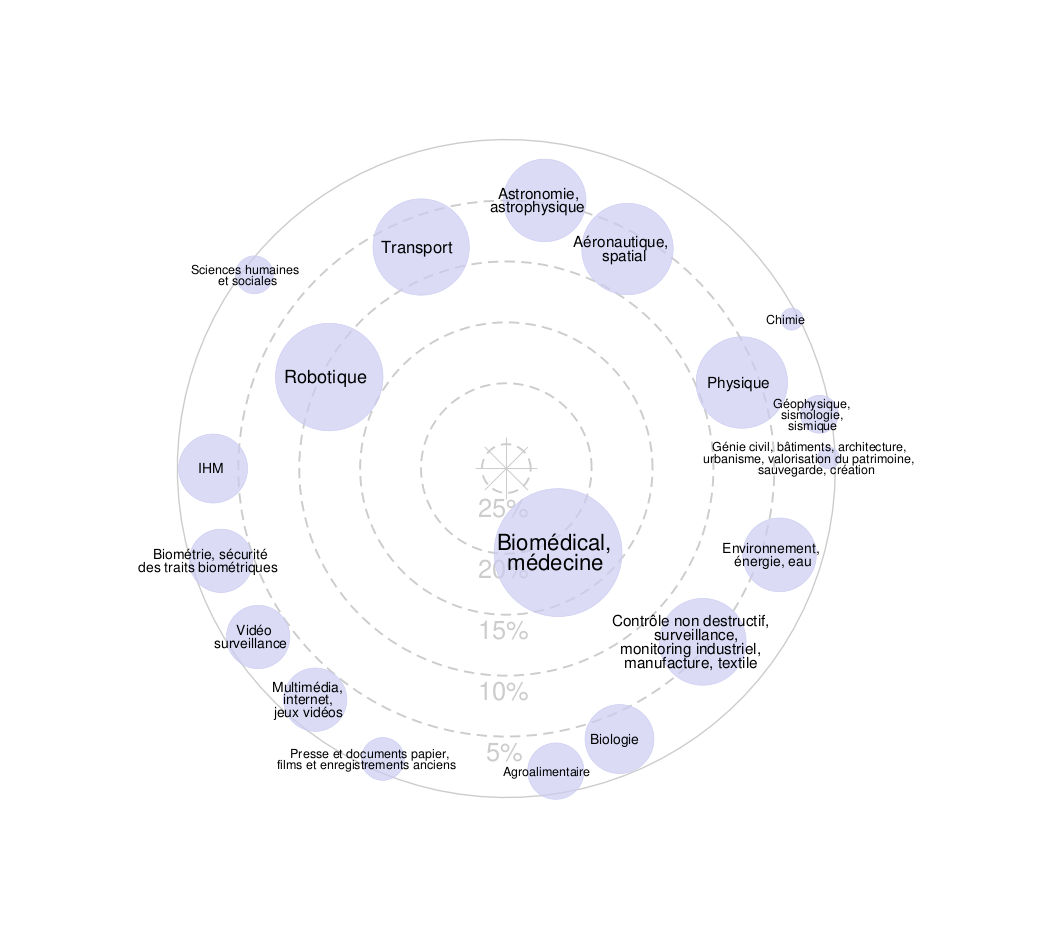Stage M2
Location: CREATIS Laboratory, Villeurbanne, France
Subject: Histopathology is currently the gold-standard technique for tissue characterization. Nevertheless, it is a local, invasive, time-consuming and expensive method. Tissue characterization through imaging would enable a global analysis of the organ without invasiveness or additional cost. Ultrasound images include speckle, which is linked to the scattering of waves from the surface of small structures within the tissue. The aim of this internship is to characterize tissues by using the speckle in the images with deep learning by correlating the speckle patterns to the grade of the disease.
Keywords: Deep learning, speckle, ultrasound images, explicability
Location: CREATIS Laboratory, Villeurbanne, France
Duration: 6 months
Subject:
Histopathology is currently the gold-standard technique for tissue characterization. It is used for a wide range of pathologies (cancer, fibrosis, steatosis, etc.), enabling pathology to be identified and assessed, and so appropriate treatment to be put in place. Nevertheless, it is an invasive, time-consuming and expensive method: a tissue sample has to be taken, prepared and then observed under the microscope. In addition, the results are highly dependent on the chosen sample, and does not provide an overall view of the affected organ. Tissue characterization through imaging would enable a global analysis of the organ without invasiveness or additional cost. Ultrasound imaging is used for many organs. These images include speckle, which is linked to the scattering of waves from the surface of small structures within the tissue. The aim of this internship is to characterize tissues by using the speckle in the images with deep learning by correlating the speckle patterns to the grade of the disease.
To do this, we will need to identify the regions of interest in the images and extract from these regions the common speckle patterns to each grade. Thus, a part of the method will be to extract, from the input images, the patches that are important for correctly classifying the images into the different grades. To do this, the attribution method [1, 2] can be used. To quantify the importance of speckle in predicting the correct grade of disease, both speckle and non-speckle images will be used. The aim is to create, from the extracted patches, a disentangled latent space separating the speckle information only available in certain images from the rest, using siamese networks [3]. Finally, this latent space will be used to create a set of prototypes [4, 5] corresponding to speckle patterns for each grade.
As a first step, simulated images (using SIMUS [6, 7]) with specific scattering centers and known speckle patterns and localization will be used as a proof of concept. This will enable us not only to evaluate our method, but also to replace certain parts of it with manual steps. Depending on the project’s advancement, the classification of liver fibrosis on real images [8] will be investigated. For this, a state-of-the-art despeckling method will be implemented [9, 10] to create a database of paired images (with and without speckle).
Student profile: Master or engineering student in Computer Science with strong programming skill in Python (Pytorch is a plus) and a background in deep learning and/or image processing.
Applications:
Please send your resume, a cover letter and your master or engineering school transcripts to:
– Valentine Wargnier-Dauchelle, valentine.wargnier@creatis.insa-lyon.fr
– Pauline Muleki-Seya, pauline.muleki@creatis.insa-lyon.fr
– Michaël Sdika, michael.sdika@creatis.insa-lyon.fr
References:
[1] ERION, Gabriel, JANIZEK, Joseph D., STURMFELS, Pascal, et al. Improving performance of deep learning models with axiomatic attribution priors and expected gradients. Nature machine intelligence, 2021, vol. 3, no 7, p. 620-631.
[2] SIMONYAN, Karen. Deep inside convolutional networks: Visualising image classification models and saliency maps. arXiv preprint arXiv:1312.6034, 2013.
[3] CHICCO, Davide. Siamese neural networks: An overview. Artificial neural networks, 2021, p. 73-94.
[4] RYMARCZYK, Dawid, STRUSKI, Łukasz, GÓRSZCZAK, Michał, et al. Interpretable image classification with differentiable prototypes assignment. In: European Conference on Computer Vision. Cham: Springer Nature Switzerland, 2022. p. 351-368.
[5] GAUTAM, Srishti, BOUBEKKI, Ahcene, HANSEN, Stine, et al. Protovae: A trustworthy self-explainable prototypical variational model. Advances in Neural Information Processing Systems, 2022, vol. 35, p. 17940-17952.
[6] GARCIA, Damien. SIMUS: an open-source simulator for medical ultrasound imaging. Part I: theory & examples. Computer Methods and Programs in Biomedicine, 2022, vol. 218, p. 106726.
[7] CIGIER, Amanda, VARRAY, François, et GARCIA, Damien. SIMUS: an open-source simulator for medical ultrasound imaging. Part II: comparison with four simulators. Computer Methods and Programs in Biomedicine, 2022, vol. 220, p. 106774.
[8] JOO, Yunsang, PARK, Hyun-Cheol, LEE, O.-Joun, et al. Classification of liver fibrosis from heterogeneous ultrasound image. IEEE Access, 2023, vol. 11, p. 9920-9930 (https://www.kaggle.com/datasets/vibhingupta028/liver-histopathology-fibrosis-ultrasound-images/data).
[9] RAJABI, Mahsa, GOLSHAN, Hanif, et HASANZADEH, Reza PR. Non-local adaptive hysteresis despeckling approach for medical ultrasound images. Biomedical Signal Processing and Control, 2023, vol. 85, p. 105042.
[10] CHEN, Yuqing, GUO, Zhitao, YUAN, Jinli, et al. Dual-TranSpeckle: Dual-pathway transformer based encoder-decoder network for medical ultrasound image despeckling. Computers in Biology and Medicine, 2024, vol. 173, p. 108313.





